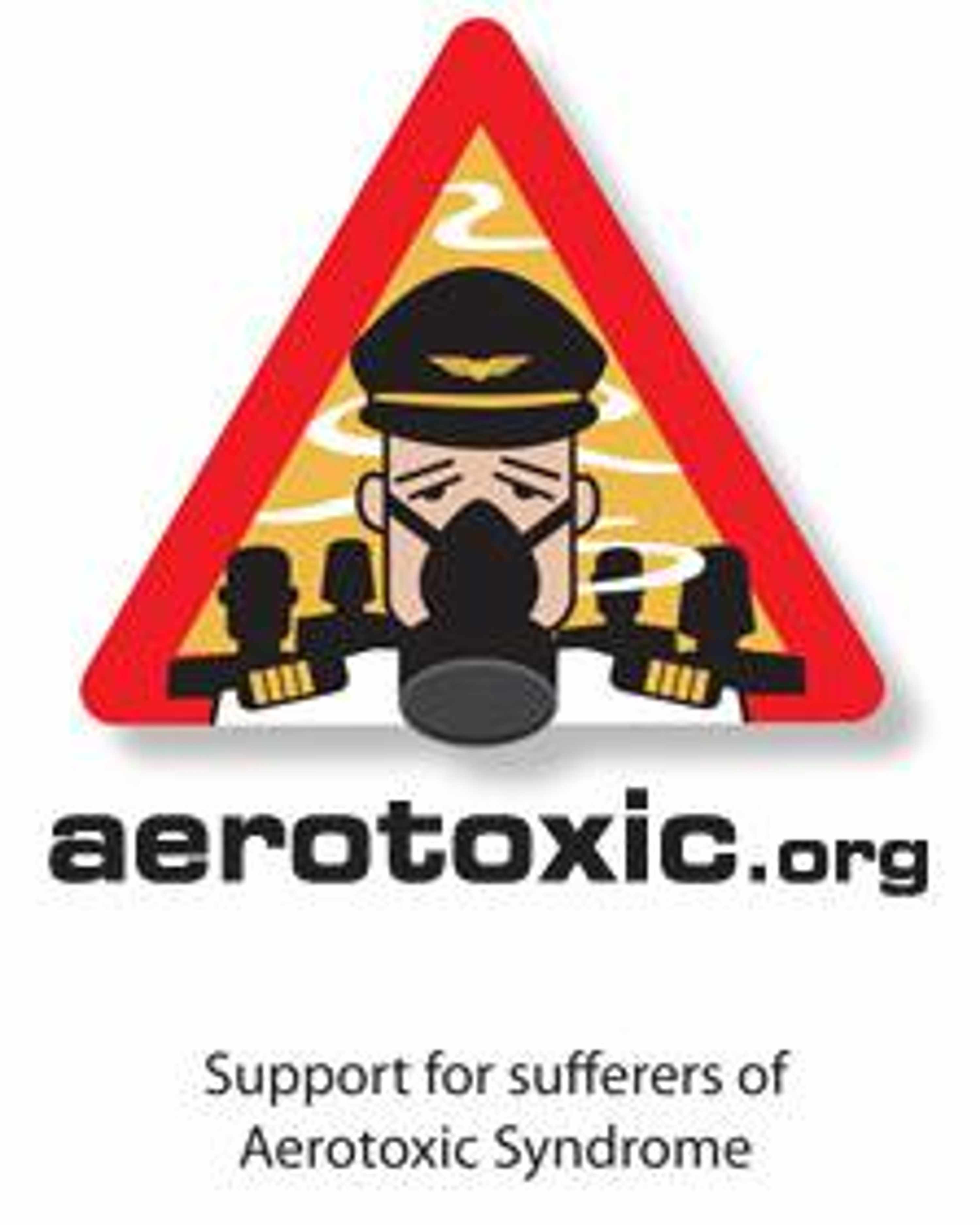Transcendent toxic pathogenesis of chemical-exposures inexplicably exceeding their customary characteristics play an ever-larger role in human health in this era of pervasive pollution and chemical assault. Nanopathology may be the key to demystifying modern immune system disorders such as Aerotoxic Syndrome and Chronic Fatigue Syndrome.
Transcendent toxic pathogenesis of chemical-exposures inexplicably exceeding their customary characteristics play an ever-larger role in human health in this era of pervasive pollution and chemical assault. Nanopathology may be the key to demystifying modern immune system disorders such as Aerotoxic Syndrome and Chronic Fatigue Syndrome.

 Aerotoxic Syndrome: The Warning Signs of Nanopollution That Went Unheeded ** –by Erik Johnson and Khaly Castle Aerotoxic Syndrome is a term that describes a fairly recent phenomenon –illness attributed to airplane cabin air that has been contaminated with atomized chemicals. According to Wikipedia, with the exception of the Boeing 787, the air in a jet or turboprop cabin is supplied by “bleed air” from the aircraft’s engines. By most accounts, cabin air is approximately half bleed air, and half recirculated air. Although most aircraft cabins have filters for the recirculated air, the bleed air is not filtered. Aircraft bleed air has the potential to be contaminated with numerous chemicals, not the least of which is TCP (tricresyl phosphate) from synthetic lubricant oils. This can happen when there is a seal leak, or when reservoirs are overfilled. TCP is an organophosphate, deemed to be linked to neurological damage when ingested. According to a 2009 article in the Wall Street Journal, “Up in the Air: New Worries About “Fume Events” on Planes**” the FAA recorded over 900 “fume events” between 1999 and 2008. “But some airline-worker unions believe that contamination events are underreported by airlines and pilots.”
Aerotoxic Syndrome: The Warning Signs of Nanopollution That Went Unheeded ** –by Erik Johnson and Khaly Castle Aerotoxic Syndrome is a term that describes a fairly recent phenomenon –illness attributed to airplane cabin air that has been contaminated with atomized chemicals. According to Wikipedia, with the exception of the Boeing 787, the air in a jet or turboprop cabin is supplied by “bleed air” from the aircraft’s engines. By most accounts, cabin air is approximately half bleed air, and half recirculated air. Although most aircraft cabins have filters for the recirculated air, the bleed air is not filtered. Aircraft bleed air has the potential to be contaminated with numerous chemicals, not the least of which is TCP (tricresyl phosphate) from synthetic lubricant oils. This can happen when there is a seal leak, or when reservoirs are overfilled. TCP is an organophosphate, deemed to be linked to neurological damage when ingested. According to a 2009 article in the Wall Street Journal, “Up in the Air: New Worries About “Fume Events” on Planes**” the FAA recorded over 900 “fume events” between 1999 and 2008. “But some airline-worker unions believe that contamination events are underreported by airlines and pilots.”
Nanoparticles One can find numerous studies regarding nanoparticle content in aircraft engine emissions. Most agree that “aircraft engines emit a considerable amount of insoluble sub-0.1 μm sized combustion aerosol particles” Petzold, Aviation Particle Emissions and Airport Air Quality, June 14, 2005__. Let’s bang that against the 2007 annual report issued by The Committee on Toxicity, a committee that evaluates chemicals for potential to harm human health, for various government departments and regulatory authorities in the UK. This report covers a variety of toxic topics, including nanoparticles: The COT addendum to joint statement of the committees in Toxicity, Mutagenicity and Carcinogenicity on Nanomaterial Toxicology. Item number 11 is of particular interest: For pharmaceuticals it has been shown that incorporation into nanoparticle formulations can greatly influence the biodistribution (and hence toxicity) of included chemicals. Indeed the intention behind many such formulations is to facilitate drug delivery across tissue barriers. There is little evidence that the biodistribution of other chemicals not physically included in the original formulations, but accidentally present in the body at the same time as the nanoparticles, can be so influenced. However there is at least a theoretical possibility that freshly generated nanoparticles with reactive surfaces could significantly bind and alter the biodistribution of other xenobiotics. Such effects would not represent nanoparticle toxicity per se, but would represent a consequence of co-exposure.
"Reactive surfaces could significantly bind and alter the biodistribution of other xenobiotics” This is exactly what we were talking about in our last piece, “And now for something completely different.” If, for instance, TCP would normally have to be ingested in quantity in order for its neurotoxic effect to establish damage in the human body, but instead was delivered directly to the brain via binding to nanoparticles, then we are talking about a whole new and potent delivery system of xenobiotics - one that would not require “massive quantities” to see effect. So while it may not appear that enough xenobiotics were being introduced into your airplane cabin via the “bleed air”, the fact that nanoparticles can grab these toxins and upload them to the brain, bypassing normal avenues of immune response, changes the game completely. We also talked about fungi which can act as nanoparticle factories, metabolizing nanoparticles and then spitting out plumes of even smaller nanoparticles, and in some cases how mold toxins can attach to the new smaller nanoparticles. Add that to the mix, and we have a very effective neurotoxin mechanism.
Neurotoxin “delivery” mechanism Dr. Sarah Myhill, CFS/ME expert in the UK, is also the medical advisor to the Aerotoxic Association . She goes into more detail in her paper Aerotoxic Syndrome – The Poisoning of Airline Pilots, Cabin Crew, and Passengers, that is possible on any airflight , where she discusses effects of bleed air and its contamination with not only TCP, but an accompanying range of volatile organic compounds and heavy metals from the engine itself. All of this is dire enough. What we are proposing is simply the additional nanoparticle factor. If we take what we already know about fume events and factor in the nanoparticle delivery-mechanism potential, we may be looking at a ready explanation for why toxic assault is happening at such increasingly devastating levels.
 Erik Johnson is a survivor of a cluster outbreak of illness in Incline Village Nevada. He observed the effect of transcendent-toxic-pathogenesis at the inception of CFS, noted its uncanny similarity to Aerotoxic syndrome, and that the application of the nanopathology hypothesis appears to possess potential to demystify at least some portion of these otherwise inexplicable phenomena. Khaly Castle is a CFS patient-advocate and blogger.
Erik Johnson is a survivor of a cluster outbreak of illness in Incline Village Nevada. He observed the effect of transcendent-toxic-pathogenesis at the inception of CFS, noted its uncanny similarity to Aerotoxic syndrome, and that the application of the nanopathology hypothesis appears to possess potential to demystify at least some portion of these otherwise inexplicable phenomena. Khaly Castle is a CFS patient-advocate and blogger.


